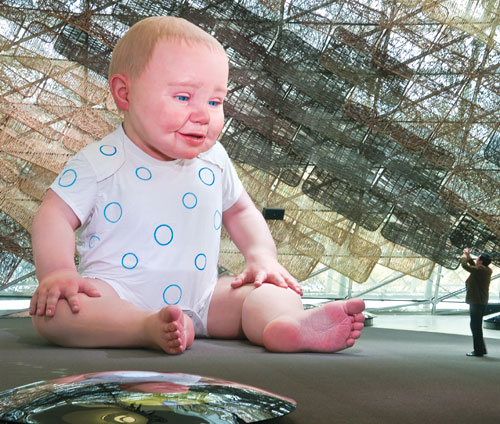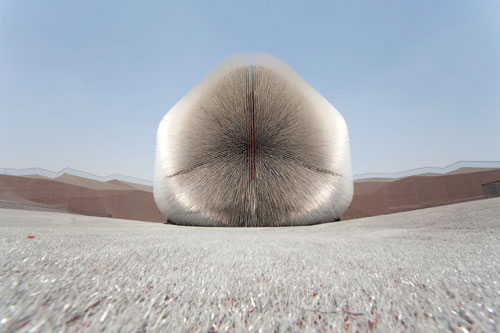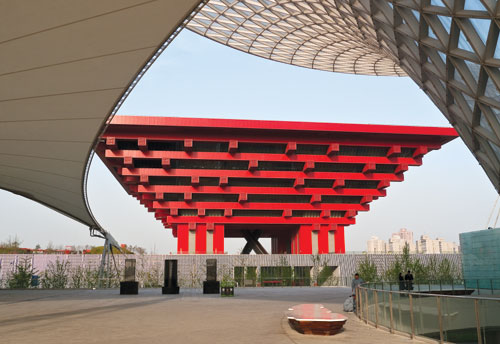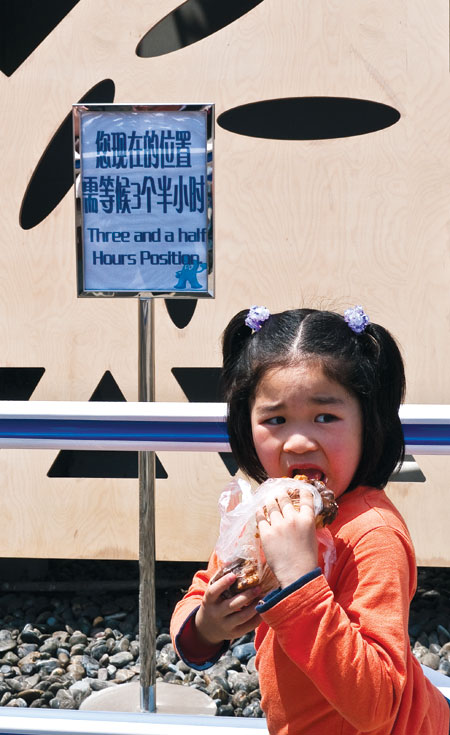
 |
|
The Spanish Pavilion was just one place where thinking big became an art form. Provided to China Daily |



 |
|
The facades of the pavilions from the UK, Portugal and China were magnets for cameras and long queues. Provided to China Daily |
A family of photographer-publishers was awestruck by the Shanghai Expo 2010, and has worked hard to save the memories, Mike Peters reports.
It's hard to let go of a really good party. The Beijing Olympic Games was such a great experience for China that we still love all things Olympic.
The Shanghai Expo was another triumph two years later and, to make sure we don't forget the architectural magic of it, a European publishing family has teamed with Expo organizers and pavilion creators to preserve the moment in a grand 480-page coffee-table book, unabashedly titled The Unbeatable.
"No one ever said the word 'pavilion'," recalls photographer Katarina Stuebe with only mild exaggeration. "We would never meet in a cafe or in a restaurant It was more like 'I'm in Denmark', 'I'm in the UK,' 'Let's meet in Spain ' or 'There's a party in Turkey tonight.'"
That sense of place owed much to the designers of each structure, who took the Expo theme "Better City, Better Life" and let their imaginations run.
The results captured imaginations from around the world - as architect He Jingtang discovered when folks started lining up, sometimes for hours, outside the signature silhouette of the world's fair, the bright red Chinese pavilion.
"Some say it looks like an old Chinese official's cap," He tells the book's editors. "Some say it's a kind of ancient Chinese cooking vessel. Some even say it's a grain barn. No matter what they think the image is, they all think it's very Chinese. That's what I wanted."
The structure's redness seems natural now - but He didn't approach the color lightly.
"It is the first time that I dared to use red on such a large-scale building," the veteran architect recalls. "We collected every kind of red color that we needed and tried to find the right Chinese red from these colors, such as the red of Tian'anmen, the Forbidden City and the Chinese national flag. We even invited experts from the color research institute at the China Academy of Art for help."
The big, full-color format of the book gives the most famous edifices - South Korea's stunning facade of han-geul characters, Spain's tumultuous wickerwork, the startlingly green aura of Saudi Arabia's entry - plenty of space to shine.
Originally hired to document the Danish Pavilion, Reveal Books' Detlef Stuebe says he and his colleagues were so taken with the scene that they ventured with their cameras into as many pavilions as they could, eventually collecting images of 51. But they still weren't thinking "book" at first, until the scale of what they'd done just for pleasure began to take shape. "Then we thought a small book," he says, laughing. "But we couldn't do it justice in 280 pages."
The treasure trove of images ultimately consumed 480 pages and weighed 3.6 kilograms. The editorial team supplemented the entries with chats and working sketches by the architects as well as 600 often gobsmacking photos of the final structures - plus notes on awards won by the structures and what happened to them when the 2010 event came to an end.
Many of the structures celebrated native materials - bamboo for India, cork for Portugal.
There were hymns to sustainable living, open space, family life and urban civility. There were bows to the host country ("A meaningful Chinese symbol of a boat filled with the treasures of Saudi Arabia that sailed from the Kingdom to China," says architect Wang Zhenjun of his Saudi structure) but all strove to be, in the words of Nepal's Binayak Shah, "a window for the world to peek through and get to know" their own countries.
Copies of the limited-edition book are available through the publisher's website, www.ExpoTheUnbeatable.com, for $99.
Contact the writer at michaelpeters@chinadaily.com.cn.